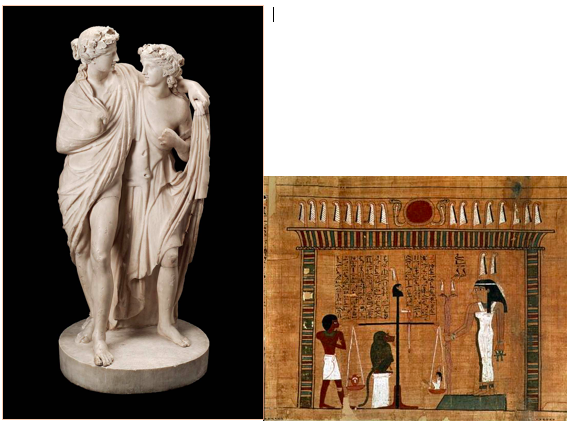From what I have learned thus far in my college career and also, my experiences outside of school, I believe humanism to be an idea centered on human beings rather than immortal or supernatural things. In psychology, a humanistic perspective focuses on the client and supporting him or her with a positive input rather than pointing out wrongs. It is an idealistic view that humans are innately good and whatever they do wrong has to be the consequence of situational influences. The most apparent way that humanism is reflected in Greco and Roman art is through the real like human like portrayal of the art. As we discussed in class, the minute details in the movement of the body and face becomes emphasized. For example, hair deviates aways from a standard rigid structure to a more real like with fluidity. They especially emphasizes the athleticism which represents strength, beauty, and an advantage. Even in the portrayal of supernatural divine beings, the Greeks and Romans glorify the physical beauty of the human body. This is drastically different from the Egyptians as they did not fully capture the realistic human body in their portrayal of subjects. They are usually very formalized, static, and less naturalistic. It is clear that they didn’t have a humanistic approach to art in their depictions of deity, who have animal heads and human body.
For example, in a sculpture from the Greco-Roman period titled “Dionysos and Maenad”, the viewers see a portrayal of two women, draped with some cloth. In the sculpture, the artist show realistic movements in the body as well as a real life like connection between the two subjects. Even the clothing are portrayed so naturally. Though the women remain still, they are positioned in a real human like way. In contrast, the papyrus rolls that depict the weighing of the heart, the observers see stoic, rigid, pillar like beings that are represented as either human beings or deities. They are all created in a standardized method, not giving the subjects any of their individualistic features. Though humanism is apparently present in Greco-Roman art, I think both artwork has correctly captured a time in history that we haven’t seen or heard of. The art speaks of the type of people that lived at the time, and a little bit about their perspectives about the human being.


